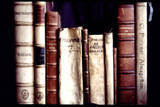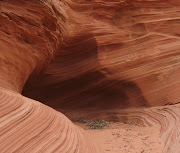 Hurtling through space, with a few megatons of potential force behind its first punch, is an asteroid aiming to clean the Red Planet's dusty clock. Earth got lucky as it was a swing and a miss from the asteroid named 2007 WD5 , putting it squarely on its path straight towards Mars. The odds are being calculated by NASA's near miss enthusiasts in Pasadena, CA, at the Near Earth Object (NEO) program on everything from the amount of power from scenarios of when/if the asteroid collides with Mars (1 in 75 chance) to time of impact. Scientists are observing with quirky sighs of relief as they map trajectory possibilities of the 160 foot wide space pebble with a lot less skin in the game now. But those same scientists (self styled as the Solar System Defense Team) would be ecstatic to view a collision on Mars on 30 January, 2008, refining all types of prior guesstimates. The oddsmakers aren't feeling too good about Mars chances. (photo NASA/JPL)
Hurtling through space, with a few megatons of potential force behind its first punch, is an asteroid aiming to clean the Red Planet's dusty clock. Earth got lucky as it was a swing and a miss from the asteroid named 2007 WD5 , putting it squarely on its path straight towards Mars. The odds are being calculated by NASA's near miss enthusiasts in Pasadena, CA, at the Near Earth Object (NEO) program on everything from the amount of power from scenarios of when/if the asteroid collides with Mars (1 in 75 chance) to time of impact. Scientists are observing with quirky sighs of relief as they map trajectory possibilities of the 160 foot wide space pebble with a lot less skin in the game now. But those same scientists (self styled as the Solar System Defense Team) would be ecstatic to view a collision on Mars on 30 January, 2008, refining all types of prior guesstimates. The oddsmakers aren't feeling too good about Mars chances. (photo NASA/JPL)Earth has seen a rare fireball of an asteroid's atmospheric aftereffects in 1908 Siberia, wiping out a forest with no crater. A scientific jury is hung on whether the same phenomenon was present in Peru earlier in September this year because that smashland left a massive crater as previously blogged. About 65,000,000 years ago, an impact so devastating occurred on Earth extinguishing life as it was then known by dinosaurs. Its known as the Chicxulub impact with an estimation of having been 200 times greater than 2007 WD5's collision force with Mars. Now what astronomer or sky watcher wouldn't want to that in slowmo and loop the replay."Right now asteroid 2007 WD5 is about half-way between the Earth and Mars and closing the distance at a speed of about 27,900 miles per hour," said Don Yeomans, manager of the Near Earth Object Office at JPL. "Over the next five weeks, we hope to gather more information from observatories so we can further refine the asteroid's trajectory."
If the asteroid does indeed strike Mars, it will impact somewhere in an
"We estimate such impacts occur on Mars every thousand years or so," said Steve Chesley, a scientist at JPL. "If 2007 WD5 were to thump Mars on Jan. 30, we calculate it would hit at about 50,000 kilometers per hour (30,000 miles per hour) and might create a crater more than half-a-mile wide."800 kilometer (500 mile) wide band that crosses the Martian equator. The southernmost boundary of this band lies slightly to the north of the region explored by the rover Opportunity. Though close, however, the rover is clearly outside the zone of possible impact.
 Today's telescopes would yield valuable data and downright spectacular views even from a smaller collision on Mar's equator. Right now they are of no use, as the asteroid is unseeable on the other side of the moon for the next two weeks, but moving inexorably towards Mars. Sitting ringside, would be the Mars Reconnaissance Orbiter that will be able to see the effect up close and personal should the asteroid "land". The Mars Rovers are in the nosebleed cheap seats, but barring the notorious Martian weather and wind, may be able to phone home pictures. They should get T-Shirts - "Witnessed 2007 WD5 land the 1st Punch" - Rover Opportunity 2008!
Today's telescopes would yield valuable data and downright spectacular views even from a smaller collision on Mar's equator. Right now they are of no use, as the asteroid is unseeable on the other side of the moon for the next two weeks, but moving inexorably towards Mars. Sitting ringside, would be the Mars Reconnaissance Orbiter that will be able to see the effect up close and personal should the asteroid "land". The Mars Rovers are in the nosebleed cheap seats, but barring the notorious Martian weather and wind, may be able to phone home pictures. They should get T-Shirts - "Witnessed 2007 WD5 land the 1st Punch" - Rover Opportunity 2008!
Space rubble blown about or apart may become asteroids or may be seen as meteorites falling from the atmospheric heavens to Earth. Chock full of photos, details, tidbits and space history is the book of meteor seekers everywhere, Rocks from Space: Meteorites and Meteor Hunters from O. Richard Norton & Dorothy S. Norton. It is on a second revision in hardback, a testament to its popularity.











No comments:
Post a Comment